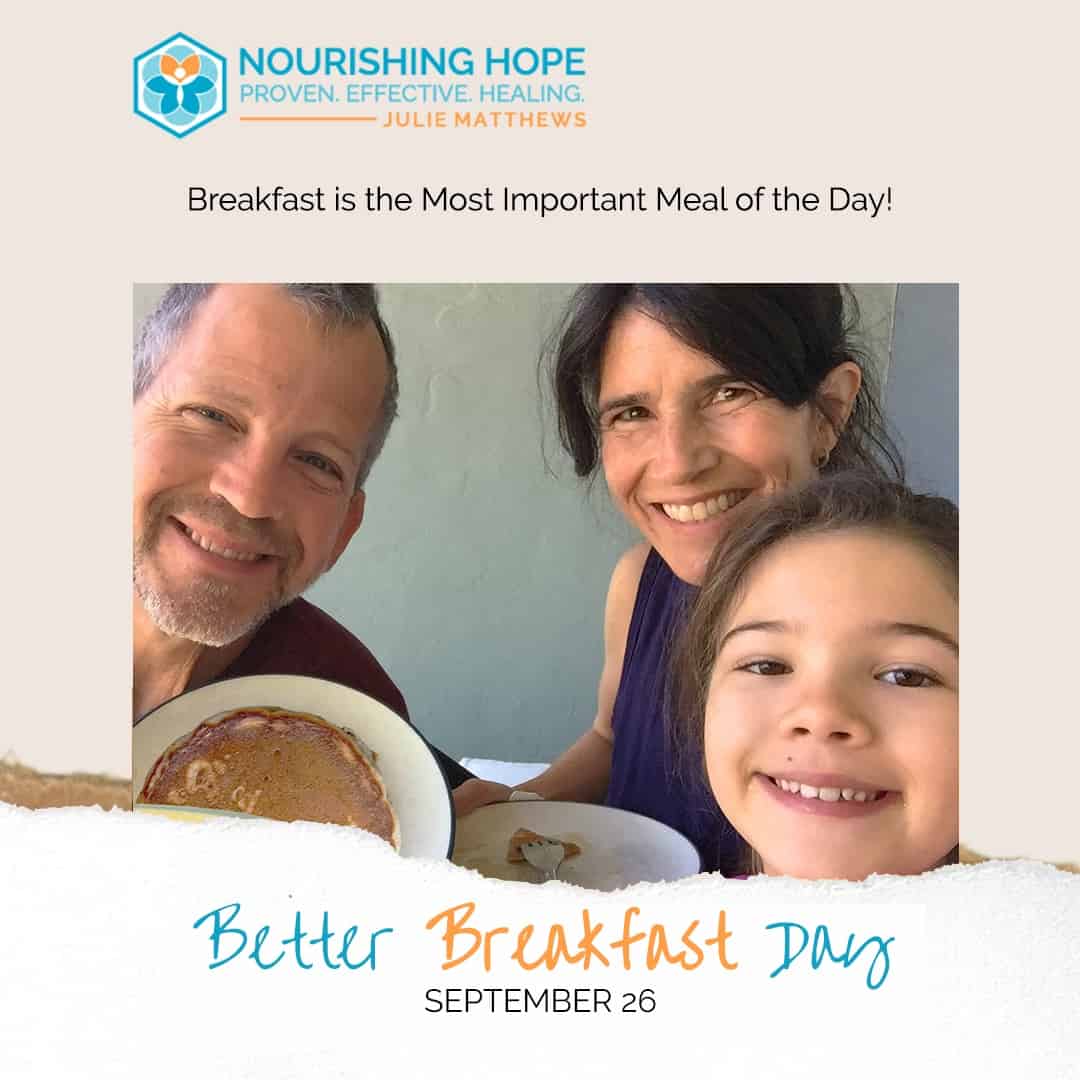
September 26th is Better Breakfast Day! I think that is a perfect time to talk about what goes into a great breakfast. Our daughter Ruby actually cooked this breakfast for us in the photo, so whether you are cooking or you get your child(ren) involved, let’s talk about the “most important meal of the day.” First, this meal really depends on the bioindividual needs of the person eating that breakfast. But, speaking generally, here are some things I consider when planning breakfast for my family.
Adequate Protein
This does not have to mean meat so for those who are vegetarian or vegan, there are other options with higher protein so don’t worry. Meat does provide us a lot of options when it comes to protein but protein doesn’t have to mean meat. Here are some of my favorites:
- Sausage – homemade or with the least amount of additives as possible. This can be chicken, beef, or pork.
- Eggs – scrambled, hard boiled, over easy, poached, or a frittata, with so many ways to serve eggs, they can be a great protein source that kids love.
- Higher protein muffins/pancakes/breads – using higher protein flours like coconut or almond, you can boost the protein and still give your child those traditional breakfast foods but boost the nutrition at the same time. These are also good for vegetarians. One note, coconut flour does usually require a lot of eggs so if you are vegan, almond flour will be a better choice for you.
Fruit
Fruit is usually a pretty easy sell for kids! Given their sweetness, many children love to have a serving of fruit with their breakfast. This is great as a topping to pancakes or waffles. Or, just have them on the side. You can also make a delicious fruit smoothie which is a favorite in our house!
Extra Nutrition With Vegetables
I take every opportunity to add vegetables where I can. Whether I am making scrambled eggs with some sauteed or shredded veggies, making homemade sausage with a little shredded zucchini or carrot, or even vegetable latkes, every little bit counts when it comes to the nutritional benefits of vegetables. Even throwing some greens into your fruit smoothie can add terrific nutrients to your breakfast!
Low Sugar
Many commercial breakfast cereals are high in sugar and low in nutrients. I tend to avoid products with added sugar and stick to things like fruit for the sweetener. Steady blood sugar helps with many things but especially in our kids with neurological issues, reducing sugars, dyes, artificial flavorings can also bring about improvements in mood, learning, and behavior. A hearty breakfast that includes adequate protein, whole grains, and some fruit can be an excellent start to the day. If you need an idea for a delicious whole grain breakfast, take a look at my recipe for Rice Porridge. Or if you like a more traditional breakfast, check out my Coconut Flour Pancakes.




Hello,
should all kids with Autism have a gluten free diet or in some cases is OK for them to have gluten?
Hi Vanessa, Every child is unique and I can’t say what they “should all” have. However, I have seen very good results with a gluten-free and dairy-free diet with children with autism.